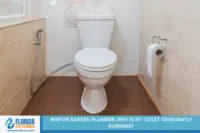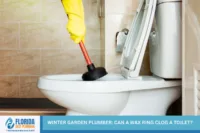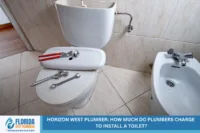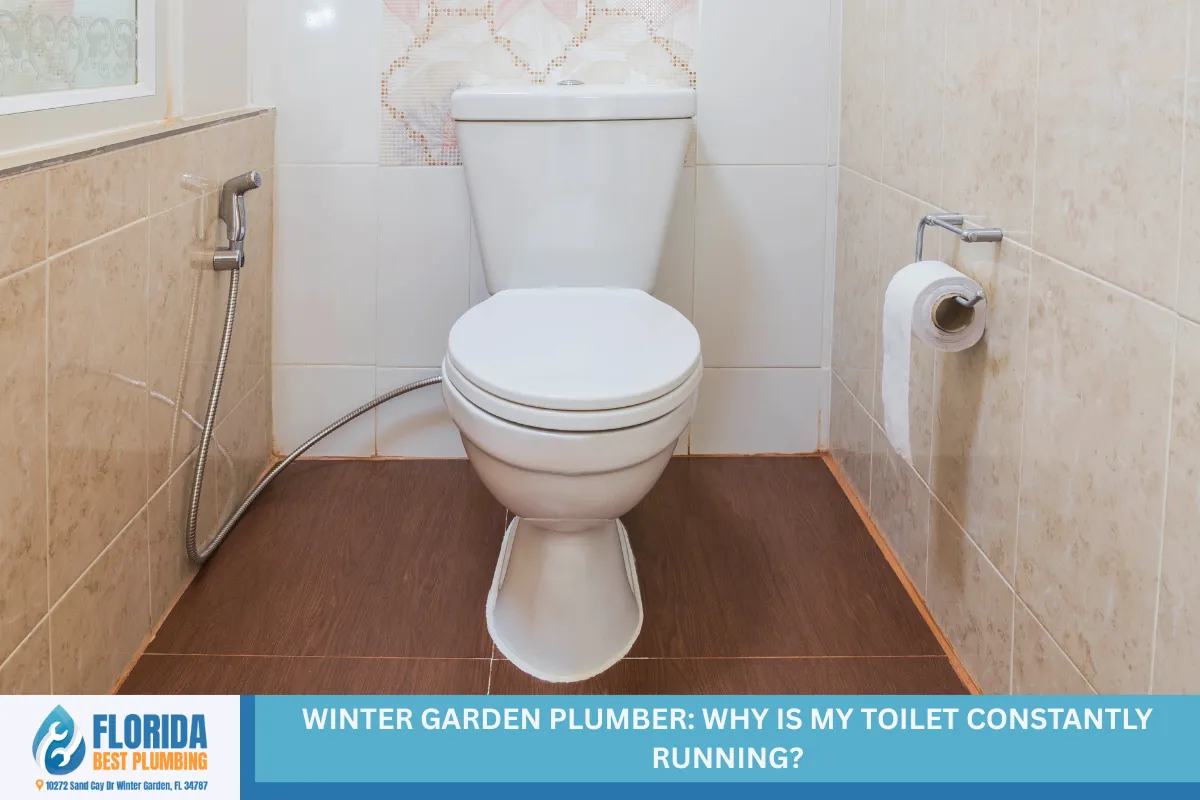
Is your first instinct to call a plumber when your toilet starts running all day and night? That’s a smart move, because a running toilet isn’t just an annoying noise—it’s a growing problem that can quickly swell your water bills, waste gallons of water daily, and even lead to expensive repairs if ignored. The longer you let a running toilet go, the more you risk a plumbing emergency, water damage, or even a ruined sewer line. But take heart: nearly all running toilet problems can be solved or prevented with some patient DIY troubleshooting or help from a professional plumber, especially if you live in Winter Garden, Central Florida. Let’s break down the most common causes, simple fixes you can try, and when to call a pro for toilet repairs!
Common Causes of a Running Toilet
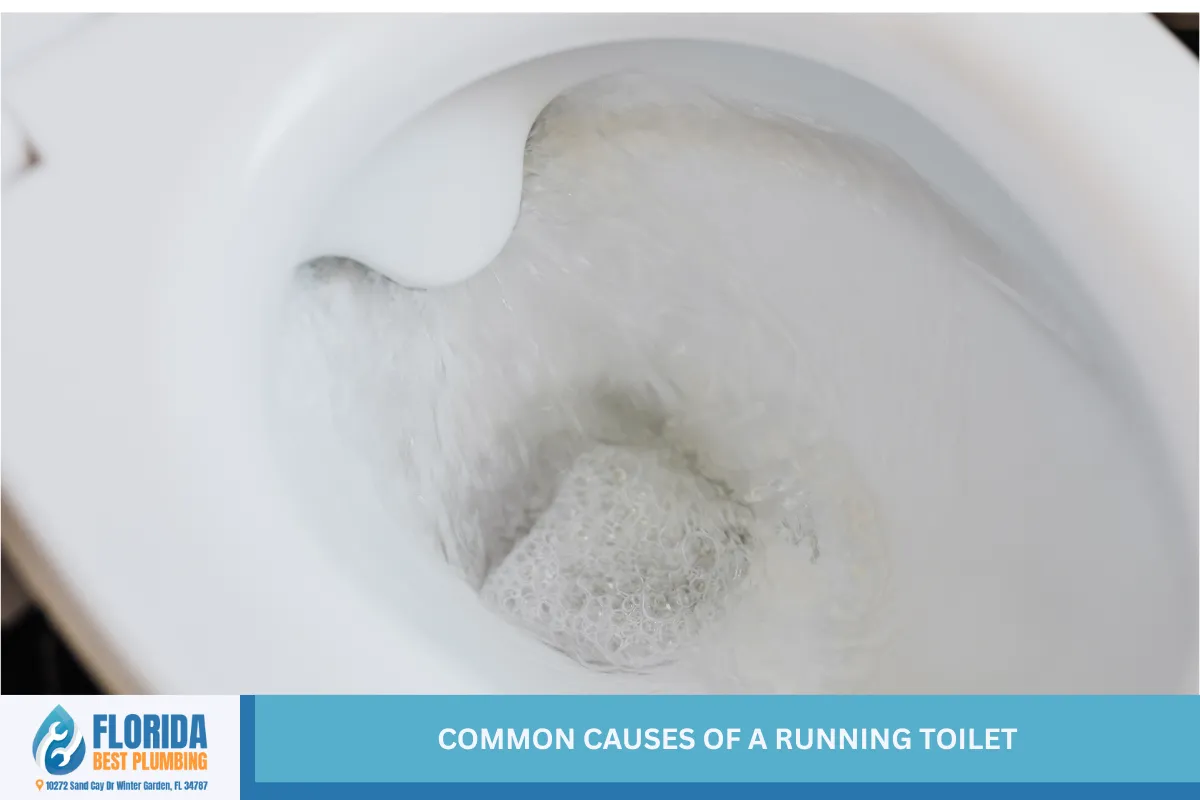
A running toilet is often due to one or more faulty or misadjusted internal parts—not a major clog or a broken porcelain tank. Here’s a rundown of the most frequent culprits:
1. Worn or Warped Toilet Flapper
The toilet flapper is a rubber or silicone valve at the bottom of your toilet tank. When you press the flush lever, the flapper lifts to release water into the toilet bowl. Over time, this flapper valve can become warped, cracked, or covered in sediment, causing it not to seal properly. This leads to what’s known as a phantom flush, where water escapes slowly into the bowl and the tank keeps refilling.
2. Flapper Not Sealing or Dirty Valve Seat
If mineral deposits, hard water buildup, or debris collect on the flapper or the flush valve seat, the flapper can’t make a clean seal. This causes a constant trickle in the bowl or a hissing sound from a tiny leak.
3. Chain Too Tight, Too Loose, or Tangled
The flush lever or handle is connected to the flapper by a chain. If the chain is too short or tight, the flapper can’t seat fully. If it’s too long or becomes tangled, the flapper may not lift properly, meaning your toilet may run after each flush or randomly at night.
4. Water Level Too High (Overflowing Into Tube)
If the water level in your toilet tank is set too high—higher than 1 inch below the overflow tube—the excess water continuously drains into the overflow pipe, causing your fill valve to keep running.
5. Faulty, Stuck, or Failed Fill Valve
The fill valve (sometimes a ballcock or newer float cup style) controls how much water refills the toilet tank. If this valve is sticking open or its diaphragm is damaged, water keeps flowing, never shutting off. Signs include a continuous hiss in the tank or the tank refilling without flushing.
6. Refill Tube Inserted Too Far
The small flexible refill tube should reach just inside the overflow tube, not extend down past the flush hole. If pushed in too far, it siphons water into the toilet bowl even when not flushing!
7. Damaged Flush Valve Seat or Gasket
The flush valve gasket or seat can degrade, causing leaks between the tank and bowl. Sometimes, leaks show up around tank bolts or at the tank-to-bowl gasket (also called a spud washer).
8. Handle or Trip Lever Sticking
If the toilet handle or inside flush lever gets stuck, the flapper might not close, prolonging water flow into the toilet bowl.
9. Sediment Buildup and Hard Water Scale
Sediment or hard water minerals clog or warp both fill and flush valve assemblies, causing erratic filling or leaking.
Recognizing the Signs of a Running Toilet
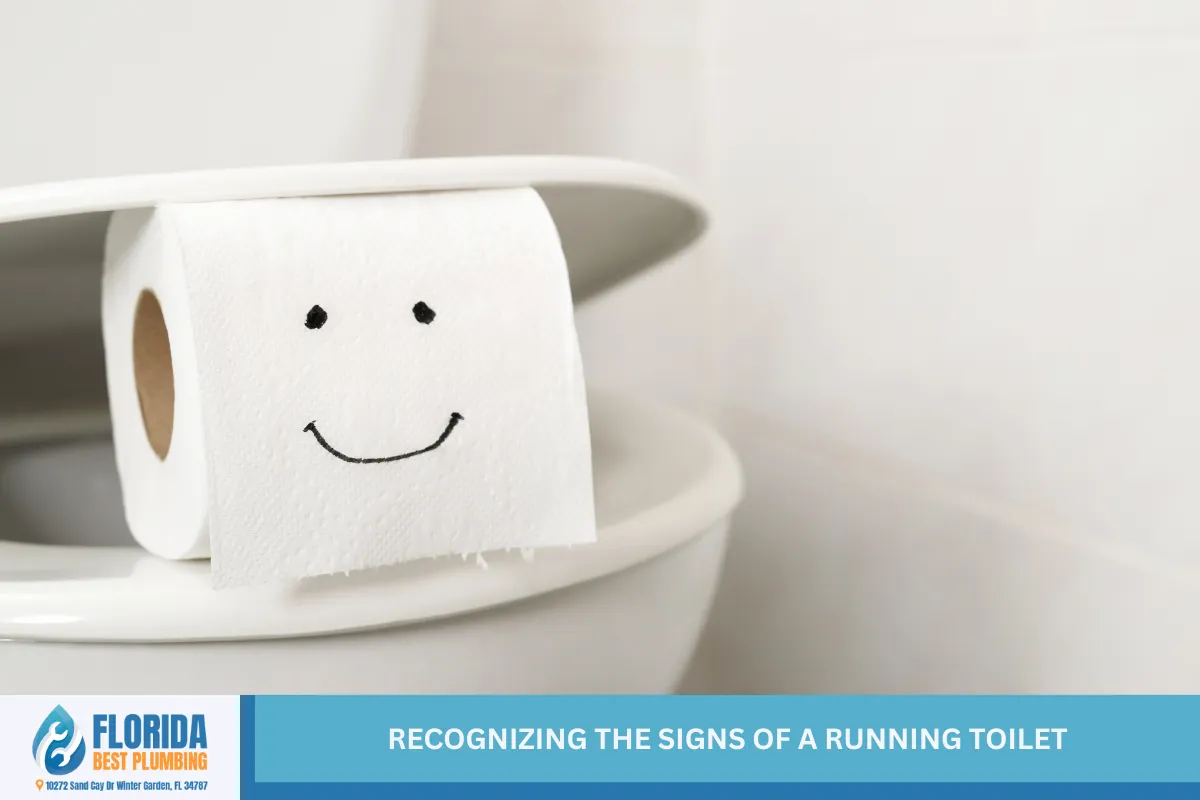
How do you know you have a running toilet problem before you get a spike in your water utility bill? Here’s what to watch for:
- Intermittent running or refilling noises: The toilet runs without being flushed, especially at night.
- Phantom flush/ghost flushing: The sound of the tank refilling randomly without anyone touching it.
- Hissing or trickling sound: Ongoing water sound from the tank or bowl.
- Visible water movement in the bowl: Even when not recently flushed.
- Water level at the top of the overflow tube: Look inside the tank—if water reaches the top of the overflow pipe, it’s too high.
- Water leaks at the base of your toilet: Caused by tank-to-bowl gasket or toilet wax ring failure.
Why You Should Never Ignore a Running Toilet
A constantly running toilet might seem minor, but the impact is bigger than you think—especially in Winter Garden and other parts of Central Florida, where water conservation matters.
- Water waste: A small leak can waste up to 200+ gallons per day!
- Higher utility bills: Running toilets can add $70–$150 to your monthly water bill.
- Potential for water damage: Persistent leaks can damage the floor, base, or even the ceiling below.
- Toilet hardware damage: Worn toilet parts may lead to bigger failures.
- Risk of plumbing emergencies: Long-term issues can lead to plumbing issues beyond just the toilet, like water heater trouble or even clogged drains and sewer line backups.
Identifying Toilet Parts: What Does What?
For troubleshooting or repair, it helps to know key toilet tank parts:
- Fill valve assembly: Controls water refilling after each flush. Can be a ballcock or a modern float cup.
- Float cup/float ball: Floats on the water to signal the fill valve to stop.
- Overflow tube/overflow pipe: Directs excess water to the bowl if the tank overfills.
- Flush valve/flapper: Releases tank water into the bowl.
- Chain: Connects the flapper to the flush lever.
- Handle/trip lever: The flush lever you press to start a flush.
- Tank-to-bowl gasket (spud washer): Seals the tank to the bowl.
- Refill tube/fill tube: A Small hose that tops up water in the bowl.
- Tank bolts with shank washers: Bolts securing the tank to the bowl, sealed with rubber washers.
- Water supply line and knob: Brings water in; the knob shuts it off.
- Toilet flange: Connects the base of your toilet to the sewer pipe.
Simple Tests for Diagnosing a Running Toilet
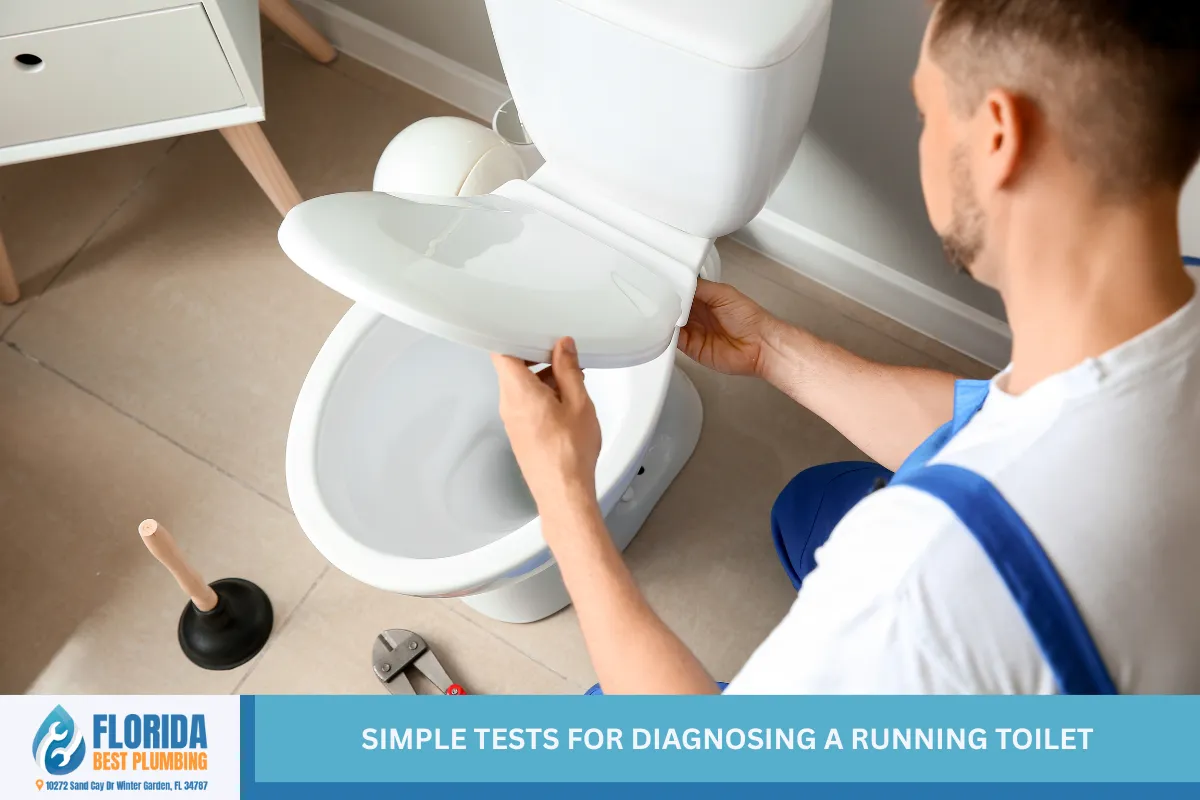
1. Dye Test (Food Coloring Test)
Add several drops of food coloring into the tank, wait 10–30 minutes without flushing. If colored water appears in the bowl, your flapper is leaking.
2. Check Water Level
Open the tank and note if water sits above the marked “fill line” or is flowing into the overflow tube. The water level should be 1 inch below the tube.
3. Listen for Sounds
A hiss means water is flowing past the fill valve or into the bowl (through a bad seal).
4. Watch the Flapper and Chain
Flush while watching—does the flapper stick, or does the chain catch? Do you see sediment on the seal?
Step-by-Step Guide to Fixing a Running Toilet

Tools and Supplies You’ll Need
- Adjustable wrench
- Channel lock pliers
- Screwdriver
- Cleaning vinegar
- Bowl or bucket
- Towel or sponge
- Teflon tape (for supply line if needed)
- Replacement flapper, fill valve, or toilet repair kit
- Toilet replacement parts (universal or brand-specific, Fluidmaster or Korky are common brands)
1. Turn Off Water Supply
Locate the water supply knob or shutoff valve behind/under the toilet. Turn it clockwise to stop the flow.
2. Remove Tank Lid and Drain Tank
Gently lift the lid and set it aside. Hold down the flush lever to let as much water out as possible. Use a sponge or towel for any remaining water.
3. Inspect the Flapper and Chain
Lift the flapper by hand—does it seem warped or not sealing? Is the chain tangled? If there’s sediment, remove it with cleaning vinegar and a cloth.
4. Replace or Clean the Flapper
If in doubt, replace the flapper (match size: most are 2-inch or 3-inch). Clean the flush valve seat with vinegar. Ensure the flapper fits snugly.
5. Adjust or Replace the Fill Valve
If the water level remains too high, use the adjustment screw or float clip to lower the float cup or float ball. The water level should be about 1 inch below the overflow tube top.
If the valve still sticks or drips, replace it with a new fill valve assembly—even modern ones are DIY-friendly.
6. Check Refill Tube
Make sure the flexible refill tube is clipped just inside the overflow pipe, not pushed down into the tube. Improper placement leads to constant siphoning.
7. Tighten Tank Bolts and Gaskets
Check tank bolts and tank-to-bowl gasket for leaks. Tighten bolts as needed (not too tight—cracked porcelain is no fun!). Replace gaskets or spud washers if necessary.
8. Turn Water Supply Back On, Test Flush
Open the water supply knob and let the tank refill. Test flush, checking all connections and seals for drips.
When to Call a Professional Plumber
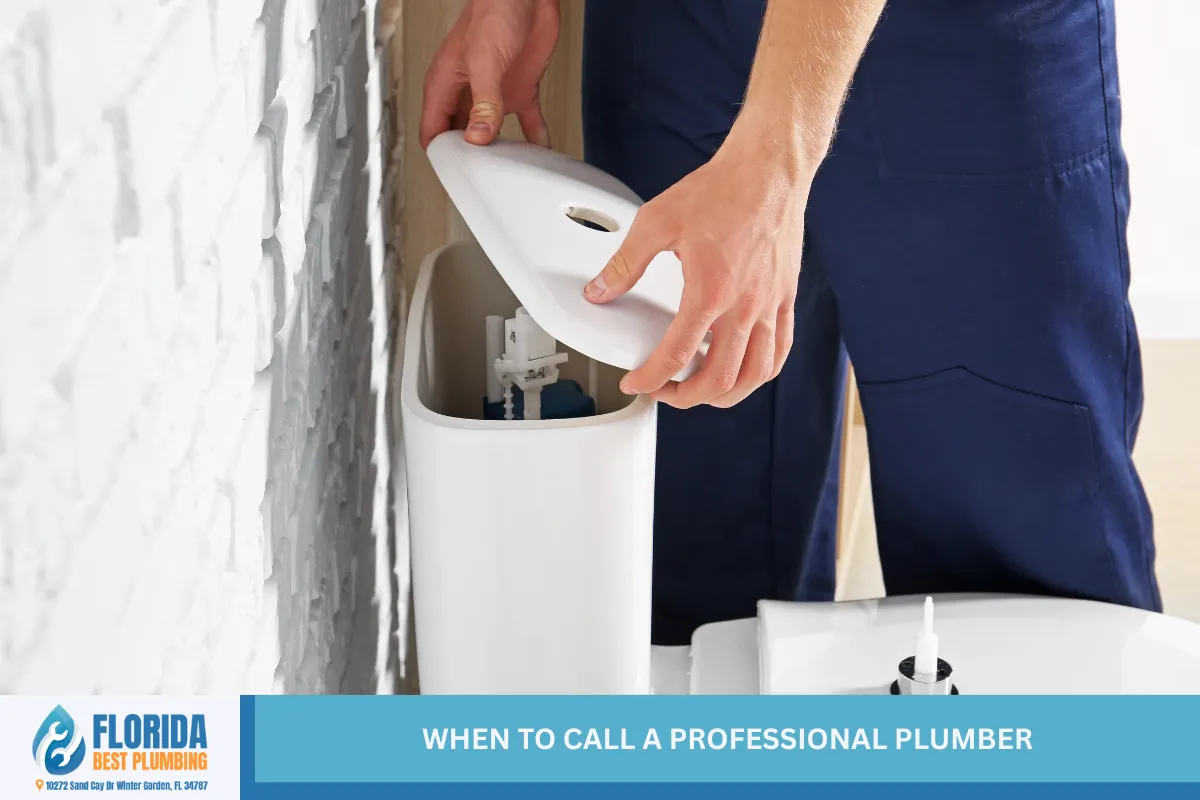
While many toilet repairs are within reach for DIYers, sometimes it’s best to call a professional plumber—especially if:
- You notice leaks at the base of your toilet or water pooling around the tank.
- You can’t identify the cause, even after testing and replacing the flapper or fill valve.
- The toilet hardware is corroded, or the tank bolts spin.
- You need emergency, same-day service for leaky toilets.
- Multiple toilets show problems (could mean main water pressure or clogged drains).
Expert plumbers in Winter Garden, FL, and Central Florida offer inspection, leak detection, drain cleaning, and even upgrades for water-efficient flushing. They have experience with older ballcock fill valves, new designs, and warranty-backed repairs.
Preventing Future Running Toilet Problems
- Perform routine maintenance: Clean tank parts annually, check for hard water scale.
- Use quality replacement parts: Universal flappers, modern fill valves (Fluidmaster/Korky), and gaskets work for most toilets.
- Test with food coloring every few months to spot silent leaks.
- Upgrade older toilets to EPA WaterSense models for extra water conservation.
- Avoid using harsh drain cleaners in your plastic bowl, as they can degrade toilet wax rings and parts.
- Get a professional inspection if you suspect water pressure is too high or if you have recurrent issues.
Quick-Reference Cheat Sheet: Solving Common Toilet Problems
- Toilet won’t stop running: Check flapper, fill valve, and float adjustment.
- Runs randomly at night: Flapper or fill valve leak.
- Constant trickle in bowl: Flapper not sealing or damaged seat.
- Tank overfilling: Adjust the float, check the fill valve, and the overflow pipe.
- Handle sticks, toilet runs: Trip lever needs adjustment or replacement.
- Water on the floor: Check tank-to-bowl gasket, toilet flange, or wax ring.
Winter Garden Plumber – Florida Best Plumbing LLC
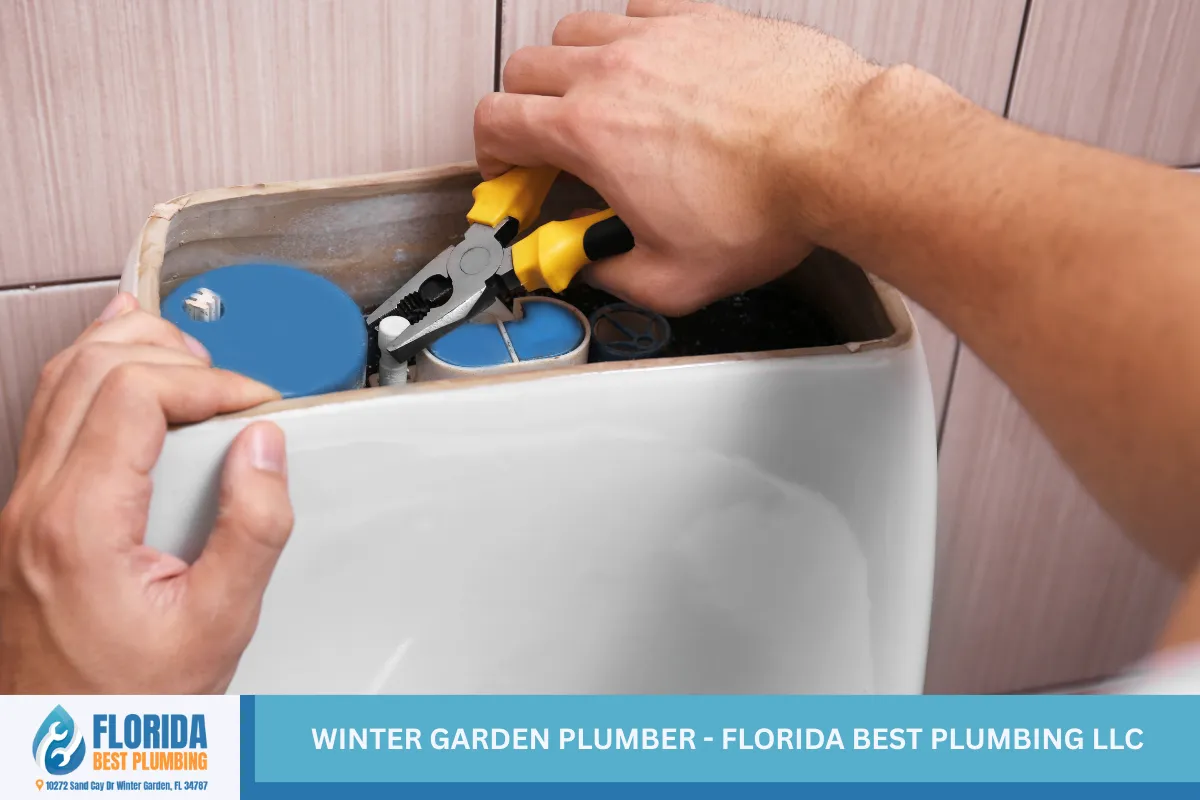
Is your toilet constantly running, wasting water, or driving up your utility bills? Don’t let a simple plumbing issue become a costly emergency—trust Florida Best Plumbing LLC, your reliable plumber in Winter Garden, FL. Our skilled team specializes in diagnosing and fixing running toilets quickly and efficiently, saving you money and conserving water in Central Florida’s unique climate. Whether it’s a faulty flapper, leaky fill valve, or tricky tank repair, we have the expertise to handle it all. Enjoy peace of mind with fast, friendly, and professional service from local experts who care.
Call us today at (407) 683-6644 to schedule a consultation and restore your plumbing system!
Frequently Asked Questions
1. How much water can a running toilet waste in a day?
A running toilet can waste anywhere from 100 to over 200 gallons per day, depending on the size of the leak and the type of toilet. This happens because the tank is constantly refilling due to water escaping through a faulty flapper, broken fill valve, or overflow into the tube. In some cases, the amount of wasted water is almost equal to the amount used for normal flushing multiple times per day. Over a month, this could mean thousands of gallons down the drain, significantly raising your water bills and putting unnecessary strain on local water resources. Spotting and fixing a running toilet quickly helps prevent this waste and keeps utility costs manageable.
2. Can hard water and mineral deposits cause my toilet to run?
Absolutely. Hard water, common in Central Florida, often leaves behind mineral deposits inside your toilet tank, especially on the flush valve seat, flapper, and inside the fill valve mechanisms. These deposits can cause the flapper not to seal properly, leading to slow leaks and the toilet running continuously. Hard water can also clog tiny fill valve holes, causing erratic water shutoff. Regular cleaning with white vinegar and replacing affected toilet parts as needed helps prevent recurring issues linked to hard water buildup.
3. What’s the difference between a ballcock and a modern fill valve?
A ballcock is an older type of fill valve, easily recognized by its large floating ball connected to a long metal arm. The arm moves up and down with the water, opening or closing the valve to fill the tank. Modern fill valves (like the float cup style) use a vertical plastic float that slides up and down on the valve body. Both control the tank water level, but float cups tend to be more compact, reliable, and easier to adjust. When repairing or replacing your fill valve, it’s often best to upgrade to a float cup style for longer-lasting service.
4. What should I do if changing the flapper and fill valve doesn’t stop the running?
If your toilet still runs after replacing both the flapper and fill valve, look deeper. Inspect the flush valve seat and gasket for cracks or pits, as these can allow slow leaks. Check that the refill tube isn’t pushed too far down the overflow tube. Tighten or replace the tank-to-bowl gasket and bolts if you see water collecting near the base. In rare cases, the tank itself may be cracked, or the toilet flange at the floor may be loose or damaged. If all else fails, contact a Winter Garden plumber for a comprehensive inspection and professional repair.
5. Can a faulty toilet cause other plumbing issues in my home?
Yes, if left unchecked, a leaky toilet can lead to broader plumbing problems. Continuous running can stress your water supply line, raise water pressure in pipes, and potentially affect your water heater’s efficiency. Persistent leaks may damage your bathroom floor, subfloor, or even the ceiling below in two-story homes. If tank-to-bowl bolts or the toilet wax rings fail, water may seep into the floor, risking mold or rot. Regular maintenance and addressing toilet issues promptly help protect your whole plumbing system.
Read more: Winter Garden Plumber: How Do Plumbers Fix a Clogged Kitchen Sink?
Winter Garden Plumber: How Do Plumbers Fix a Clogged Kitchen Sink?
If you need a plumber in Winter [...]
Winter Garden Plumber: Why is My Toilet Constantly Running?
Is your first instinct to call a [...]
Winter Garden Plumber: Can a Wax Ring Clog a Toilet?
If you’ve ever dealt with a clogged [...]
Horizon West Plumber: How Much Does a Plumber Charge to Replace a Faucet?
Are you frustrated by leaky faucets, a [...]
Horizon West Plumber: How Much Does a Plumber Charge to Replace a Wax Ring?
If you’ve ever noticed water pooling around [...]
Horizon West Plumber: How Much Do Plumbers Charge to Install a Toilet?
Are you feeling overwhelmed trying to find [...]



